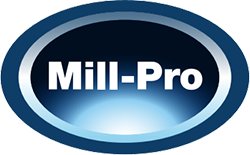
Rehabilitation Products
Polyethylene is one of the most commonly used materials globally in the rehabilitation of existing pipelines (Water, Gas and Wastewater). The methods of rehabilitation vary considerably depending on the situation. Typically in water pressure mains, the objective is to maximise the internal bore of the rehabilitated pipe in order to maintain existing flow rates at a given pressure, so close and tight fit (pipe in pipe) liner solutions are more typical.
The other main factor is the 'condition assessment' of the existing main to determine it's ability to provide a suitable host pipe for the PE liner and if additionally, it can provide structural support to the PE liner to create a composite pipe (existing host and PE combine to provide a single structural member). In Hong Kong, there are very few if any 'semi-structural liners' installed. It's more typical that the host pipe is only used to provide a path for the new PE liner, the PE liner pipe is fully structural in its own right.
Using Polyethylene to rehabilitate existing Ductile Iron and Steel pipelines that have reached the end of their operational life, is commonplace around the world. Approximately 50% of the Hong Kong Water Supplies Department's 5700km drinking and flushing water supply network was either rehabilitated or replaced between Years 2000 to 2015, the majority was repaired or replaced using Polyethylene pipes.
Rehabilitation using PE typically involves the insertion of a custom size (non-standard pipe OD) PE pipe inside an existing host pipe, from point to point without excavation in-between. There are many techniques and methods available to perform this kind of rehabilitation in sizes from DN50 to DN2000 and larger
To the left are some of the more typical products that are used in the wide variety of relining applications.
Click here to download a presentation on various relining techniques
For more information on rehabilitation methods and polyethylene products, request our presentation on rehabilitation






